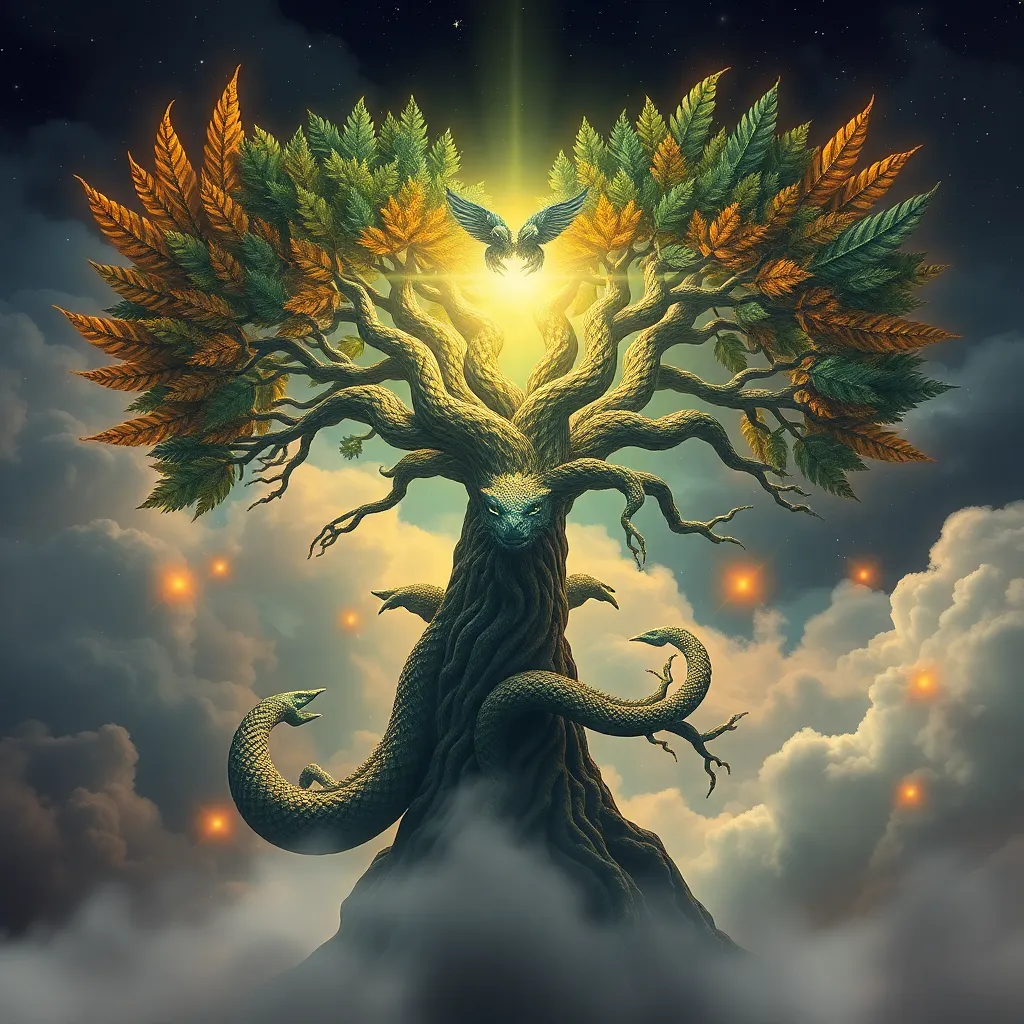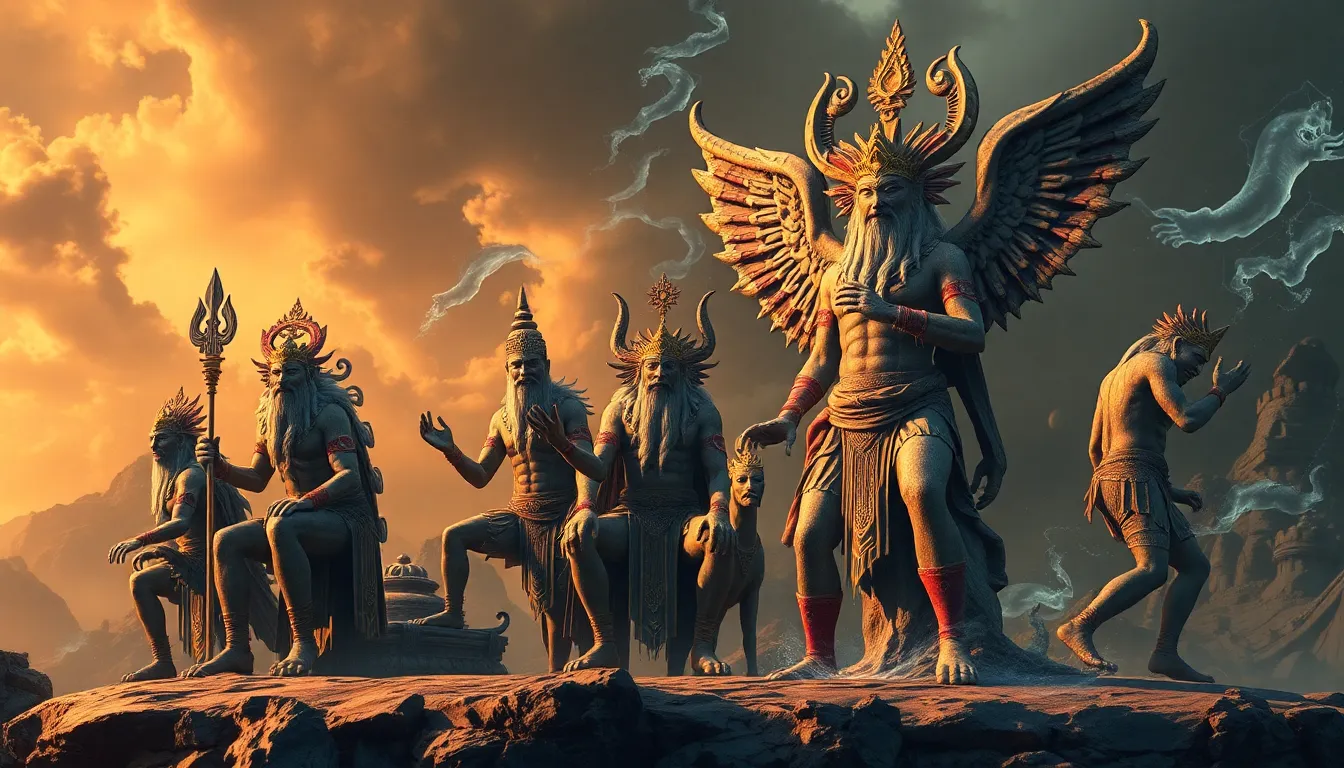The Sword of the Sun: Myths of Light and Battle
1. Introduction
The concept of the Sword of the Sun has captivated the imaginations of cultures throughout history. This legendary weapon symbolizes the triumph of light over darkness and embodies the power of the sun as a celestial force. The significance of light and battle is deeply rooted in various mythologies, where the sun often represents life-giving energy, authority, and purity in conflict. This article aims to explore the historical context, symbolic meanings, and enduring legacy of the Sword of the Sun across different cultures.
2. Historical Context of Solar Myths
Sun worship is one of the oldest forms of spiritual reverence, with origins tracing back to ancient civilizations. The sun played a crucial role in agricultural societies, dictating the rhythms of planting and harvest. As societies evolved, the sun transformed from a mere natural phenomenon into a powerful mythological symbol.
- Ancient Cultures: Many ancient civilizations, such as the Egyptians and Mesopotamians, revered the sun as a deity.
- Agricultural Significance: The sun was essential for crop growth, leading to rituals aimed at ensuring its return each season.
- Mythological Symbolism: Over time, the sun became imbued with symbolic meanings, representing vitality, power, and enlightenment.
3. The Sword as a Symbol of Power
The sword is a universal symbol found in myths across the globe. It often signifies power, authority, and the divine right to rule. In many cultures, swords are associated with heroic figures who wield them in the name of justice and righteousness.
- Divine Authority: Swords are frequently linked to divine or celestial beings, showcasing their power in the fight against evil.
- Legendary Examples: Notable swords, such as Excalibur from Arthurian legend, illustrate the connection between swords and sovereignty.
- Cultural Variations: Different cultures present unique interpretations of swords, but the overarching theme of power remains consistent.
4. Mythical Tales of the Sword of the Sun
Numerous myths feature the Sword of the Sun, showcasing its significance across various cultures. These tales often share common themes while also highlighting unique cultural perspectives.
- Greek Mythology: In Greek myths, the sun god Helios is sometimes depicted wielding a radiant sword that represents his power over light.
- Norse Mythology: The Norse god Freyr possesses a sword that fights on its own, symbolizing the sun’s power in battle.
- Asian Myths: In Hindu mythology, the sun god Surya is associated with a celestial bow and arrows, embodying the same principles of light and power.
These tales often feature key characters, such as gods and heroes, who embody the virtues associated with the Sword of the Sun.
5. The Sun as a Deity in Mythology
Throughout history, sun deities have played a pivotal role in mythological narratives, personifying the sun’s attributes and powers.
- Apollo: In Greek mythology, Apollo is the god of the sun, music, and prophecy, often depicted as a warrior with a radiant sword.
- Ra: The Egyptian sun god Ra is a symbol of life and creation, often portrayed in battles against the forces of chaos.
- Surya: In Hindu tradition, Surya represents the sun and is often depicted riding a chariot pulled by seven horses.
The interplay between light, battle, and divine intervention is a recurring theme, illustrating the sun’s role as a protector and a force for good.
6. Symbolism of Light in Battle
Light has long been associated with purity and righteousness in the context of battle. The metaphor of light often represents the struggle against darkness and evil.
- Symbol of Purity: Light is seen as a force that purges evil and brings clarity to conflict.
- Weapon Against Darkness: In many myths, light intervenes in battles, leading to the defeat of malevolent forces.
- Mythical Examples: Stories of heroes who wield light-based powers to overcome dark adversaries underscore this theme.
7. The Sword of the Sun in Modern Culture
Ancient myths continue to influence contemporary literature and media, with the Sword of the Sun appearing in various forms.
- Films: The Sword of the Sun is a common motif in fantasy films, often portrayed as a weapon of ultimate power.
- Books: Modern authors draw on these ancient narratives, reimagining them for new audiences.
- Video Games: Many games incorporate the Sword of the Sun as a legendary artifact, symbolizing heroism and light.
The evolution of this myth in modern storytelling reflects its enduring relevance and adaptability.
8. Artistic Representations of the Sword and Sun
Artistic interpretations of the Sword of the Sun can be found in various forms, from paintings to sculptures.
- Symbolic Imagery: Artists often use radiant colors and dynamic compositions to convey the power of light.
- Public Perception: These representations shape how the myths are understood and celebrated in contemporary culture.
- Exhibitions: Many museums showcase art inspired by solar myths, highlighting their significance across cultures.
9. Thematic Analysis: Light vs. Darkness
The theme of light versus darkness is a recurring motif in mythology, reflecting human struggles and psychological conflicts.
- Duality of Existence: Myths often portray light as a force of good and darkness as a representation of evil.
- Psychological Interpretations: These themes resonate with human experiences, offering insights into our own conflicts.
- Lessons Learned: The duality of light and darkness teaches valuable lessons about morality, choice, and the nature of good and evil.
10. Conclusion
In summary, the Sword of the Sun holds a significant place in mythology, embodying the principles of light, power, and the eternal struggle against darkness. From ancient tales to modern interpretations, its legacy continues to inspire and resonate with audiences worldwide. The enduring nature of these myths speaks to the universal human experience of conflict and the quest for righteousness, ensuring that the Sword of the Sun remains a potent symbol in our cultural narrative.


